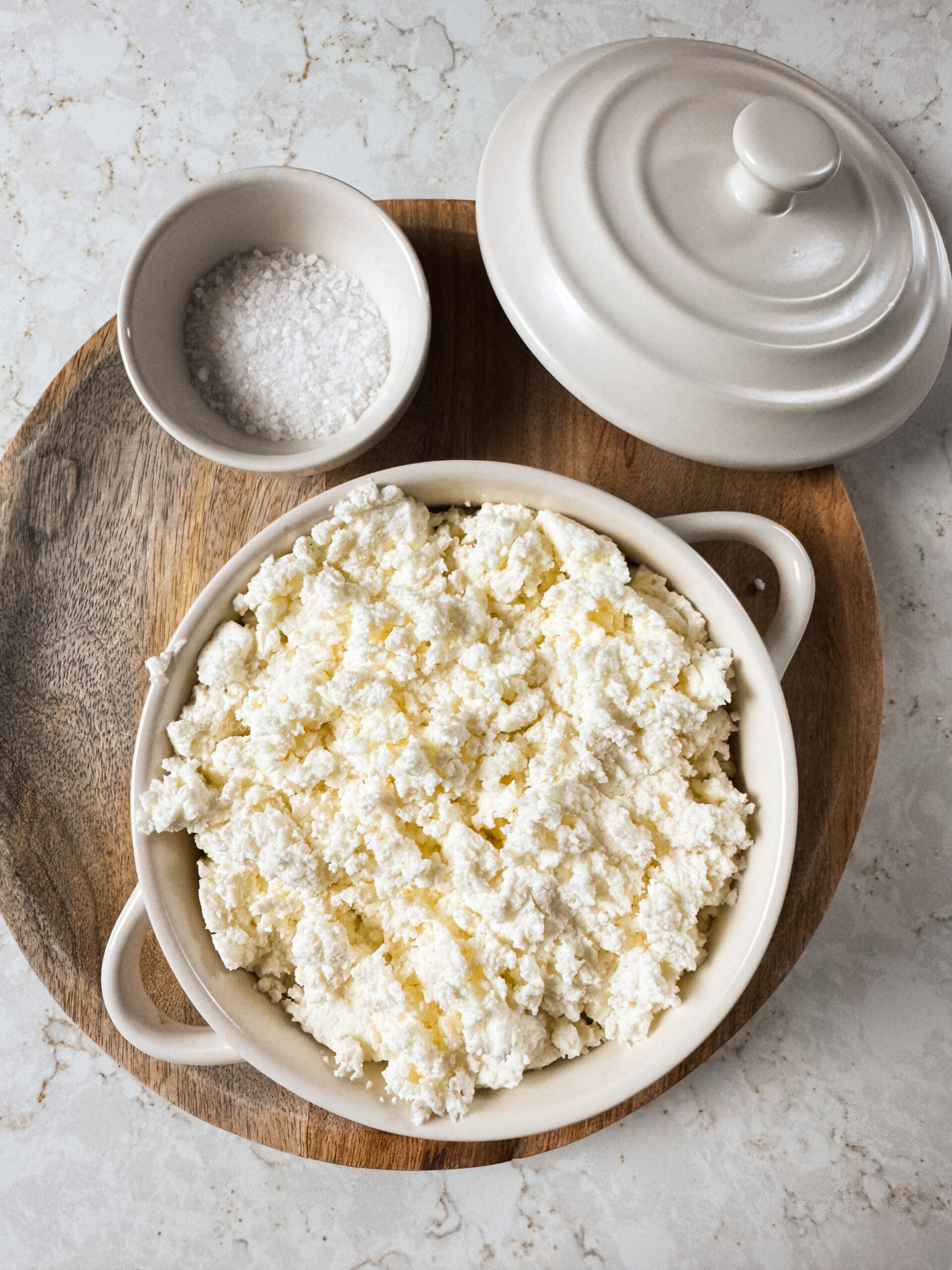
Fresh Ricotta
Fresh ricotta is not only creamier and more flavourful than store-bought but it is also half the price! Fresh ricotta is perfect to serve in lasagna, quiche, ravioli, or as a dip! This recipe makes about 1 lb of ricotta.
Equipment
- Large non-reactive pot stainless steel is best
- Instant read thermometer
- Cheesecloth and strainer
Ingredients
- 2 L whole milk* not UHT pasturized
- 2 tsp fine sea salt**
- ¼ cup (59 ml) white vinegar or bottled lemon juice
Directions
Making the Ricotta
- In the large non-reactive pot, add the milk and whisk in the salt. Turn the heat to medium and heat the milk, stirring occasionally, to 200°F.
- If you don’t have an instant read thermometer, heat the milk until you just begin to see light bubbling cauldron movement in the milk when it’s stirred. Typically this occurs after it has reached 200°F so keep your eyes on the milk. It will begin to smell sweet and begin to steam as it warms up. Do not let it boil. This takes me 12-13 minutes on a 17,000 BTU gas stove.
- Once the milk reaches 200°F, remove from the heat. Quickly stir in the white vinegar or lemon juice – it should almost instantly begin to curdle. Stop stirring and let it sit, covered, for 30 minutes.
Straining and Storage
- Once the 30 minutes has elapsed, set up a cheesecloth over a strainer. If you want to keep the whey to use in other recipes (e.g. baking), place the strainer over a very large bowl. Otherwise, drain over the sink.
- Scoop the curds slowly into the cheesecloth so it doesn’t fold over itself or overflow, and eventually pour the remainder through the cheesecloth. Go slowly so you don’t spill.
- Let the cheese continue to strain and drip for 15-30 minutes depending on how firm you’d like the cheese. When using it for lasagna I like to keep a bit more of the whey. You can even let it continue to strain in the fridge for an hour or two if you’d like firm ricotta.
- Once done straining, remove the ricotta to a storage container. Turn the cheesecloth inside out and shake gently to remove the remaining curds. If you have a reusable cheesecloth, quickly rinse it in the sink to remove the remaining curds before setting it to dry over the spout.
- Enjoy!
Notes
Milk: Quality makes a difference here – the less high temperatures the milk has been exposed to, the better.
Salt: avoid salt with any additives aside from iodine. Sea salt is best.
Cheesecloth: If you don’t have a cheesecloth use a very fine mesh strainer – but I find it quite messy to clean.
Nutrition Per 100 g : Calories 150 kcal | Carbohydrates 7.27 g | Protein 7.54 g | Fat 10.2 g | Sodium 110 mg | Potassium 219 mg | Fiber 0 g